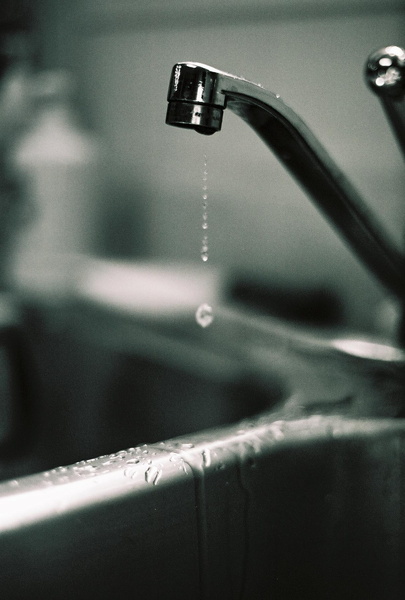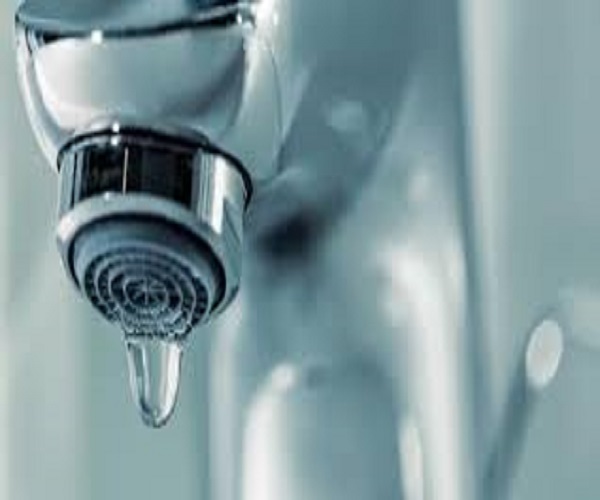Our Results of Disregarding a Damaged Faucet
Our Results of Disregarding a Damaged Faucet
Blog Article
We've come across this post relating to How to Fix a Leaky Faucet below on the net and reckoned it made sense to share it with you here.

Intro
A dripping tap could feel like a small annoyance, but its consequences extend much past the periodic drip. Recognizing the results of a dripping tap is important for both property owners and the setting. In this post, we'll check out the different effects of this typical home issue and why resolving it without delay is crucial.
Sources Of Leaky Faucets
Dripping taps can result from a variety of factors, consisting of deterioration, high water pressure, and deterioration. With time, the continuous use of faucets can bring about damaged seals and gaskets, triggering leaks to create. Furthermore, extreme water pressure can place stress on plumbing fixtures, bring about leaks. Rust and corrosion can also damage faucet components, making them prone to leak.
Water Wastage
Among the most considerable repercussions of a leaky faucet is water wastefulness. Also a little drip can add up to gallons of drainage gradually. This not only increases water expenses yet likewise contributes to water deficiency and environmental destruction. Attending to leaky taps promptly is critical for saving this priceless resource and minimizing its effect on the earth.
Financial Effect
Along with wasting water, dripping faucets can likewise have a significant monetary impact. Boosted water bills are a direct effect of water wastage, costing homeowners numerous bucks yearly. In addition, the cost of fixing water damages caused by leakages can be significant, especially if left ignored for an extensive period.
Environmental Influence
The ecological impact of dripping taps extends beyond water wastefulness. By conserving water, home owners can contribute to wider initiatives to minimize water scarcity and safeguard all-natural ecosystems. Sustainable options such as rainwater harvesting and water-efficient components can better reduce the environmental footprint of family water use.
Technical Solutions
Innovations in technology have resulted in the advancement of wise taps and water-saving tools that aid minimize water wastage. Smart faucets use sensors to discover movement and change water circulation as necessary, lowering waste without sacrificing convenience. Water-saving devices such as aerators and low-flow showerheads are also effective in conserving water without compromising performance.
Global Perspectives
While leaky taps might feel like a local problem, they contribute to wider worldwide challenges such as water deficiency and environment modification. In regions already facing water stress, every decline counts, making leakage avoidance and repair work vital. By embracing water-saving practices and buying lasting innovations, property owners can play their part in addressing these pushing worldwide issues.
Regulatory Actions
Federal government policies play an essential role in minimizing the effect of leaky taps and advertising water conservation. From constructing codes that need water-efficient fixtures to water-saving motivations and refunds, policymakers have a range of devices at their disposal. By implementing and applying these guidelines, governments can make certain that house owners prioritize water preservation in their lives.
Area Effect
Addressing leaking faucets needs collective efforts at the community level. By elevating understanding about the significance of water preservation and offering sources for leak discovery and repair, regional authorities can encourage property owners to do something about it. Efforts such as water-saving discount programs and leak detection projects can incentivize behavior modification and advertise responsible water usage.
Situation Researches
Real-life examples of the effect of dripping faucets highlight the relevance of proactive maintenance and prompt repairs. From water damage to increasing water costs, the consequences of neglecting leakages can be severe. By sharing these case studies, house owners can much better recognize the significance of dealing with leaking taps promptly.
Educational Campaigns
Educational campaigns play a vital duty in elevating awareness about the impacts of leaking taps and advertising water preservation techniques. Via workshops, seminars, and online resources, homeowners can learn exactly how to discover and fix leakages themselves. By encouraging people with expertise and devices, instructional projects can cultivate a society of liable water use within areas.
Wellness Problems
Dripping taps can develop favorable atmospheres for mold and mildew growth, posing health risks to occupants. The visibility of mold and mildew can aggravate respiratory system concerns and allergic reactions, especially in susceptible individuals. Additionally, water damages arising from leakages can jeopardize the structural honesty of structures and cause pricey repair work.
DIY vs. Specialist Fixing
When confronted with a dripping tap, house owners frequently dispute whether to try repair services themselves or work with an expert plumber. While DIY repair work can save cash, they might not always address the hidden problem efficiently. Professional plumbing technicians have the competence and equipment to detect and take care of leaks appropriately, making certain long-term remedies and satisfaction for house owners.
Preventive Measures
Stopping leaky taps requires normal maintenance and proactive actions. Basic tasks such as changing worn-out washing machines and seals can protect against leakages from developing. In addition, upgrading to top quality components and lowering water stress can assist prolong the lifespan of taps and lessen the risk of leakages.
Verdict
To conclude, the results of a leaky tap expand far past the periodic drip. From water wastage and boosted water costs to health worries and ecological impact, the repercussions of overlooking leaks can be substantial. By dealing with leaking taps promptly and embracing water-saving methods, homeowners can mitigate these impacts and add to an extra lasting future.
Why You Shouldn’t Ignore a Leaky Faucet in Your Home
What Causes a Leaky Faucet?
Various factors can cause a leak, from loose and worn-out parts to corrosion. Your faucet has four essential components from which most plumbing issues will stem: the O-ring, the valve seat, the washer and the gasket.
What Is an O-Ring?
The O-ring is a stem screw that fastens parts of the faucet in place, preventing water from leaking out of the spout. Depending on your faucet type, the stem might have multiple O-rings. Water will drip from the faucet’s handles and base if this part breaks or deteriorates.
What Is a Valve Seat?
The valve seat controls the flow and temperature of the water. Found at the base of the handle, it works as a seal for the faucet’s stem. The valve seat ensures the water is allowed to flow or is blocked as the handles dictate. You’ll know it’s malfunctioning when water leaks from your faucet’s sides.
What Is a Gasket?
The gasket is found between the water inlet and the valve stem. It creates a seal between the faucet and the sink, holding its joints by aerators attached to the stem’s head. Water will trickle out from the base if the gasket isn’t working.
What Is a Washer?
The washer secures the handles and prevents leakage, serving a similar purpose to the O-ring. While the O-ring is ordinarily round and made from an elastic material, such as rubber, the washer is square-shaped and composed of brass, copper and other hard metals. If it malfunctions, corrodes or has been improperly installed, water will leak out of the handles, causing that incessant faucet drip.
Why Is a Leaky Faucet Dangerous?
A leaky faucet left alone for too long can have significant consequences.
Pest Infestations
Since bugs and rodents gravitate towards the scent of water, a leaky faucet will draw pests to your sink. Both are looking for leaks accessible through crawl spaces, which a faucet provides. If you leave water dripping for too long, you run the risk of an infestation.
Rust
If one of the faucet parts has started to corrode, the resulting rust can spread to your pipes and valves with startling speed. The rust might even lead to cracks or other impairments, resulting in more severe plumbing issues.
Your sink could also sustain damage from a leaky faucet. The water in your tap possesses sparse elements of calcium and iron that can stain your sink with repeated and prolonged exposure. Once those elements in the water have been open to the air for some time, your sink will start to rust, creating marks that can be difficult to remove.
https://www.tomsmechanical.com/blog/why-you-shouldnt-ignore-a-leaky-faucet-in-your-home

Do you appreciate reading about ? Give a short review down the page. We will be glad to listen to your opinion about this post. We hope that you come back again in the future. Do you know somebody who is involved in the niche? Feel free to promote it. Many thanks for going through it.
Report this page